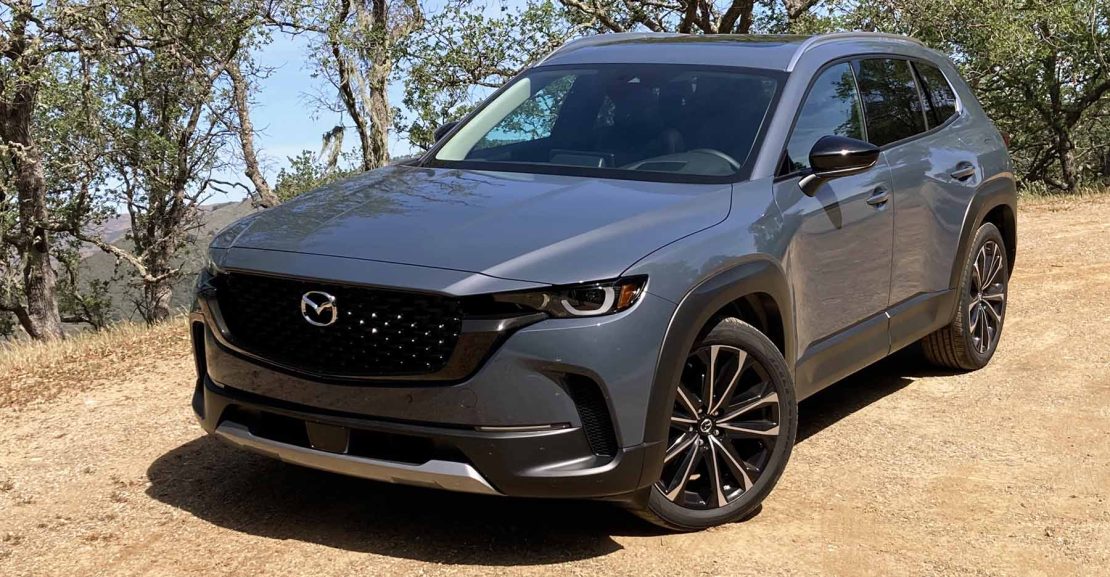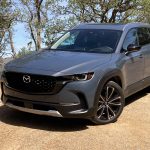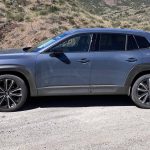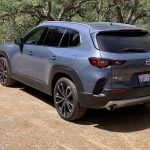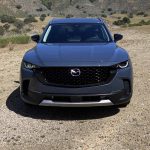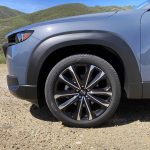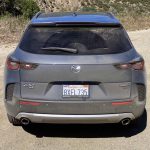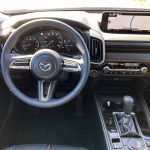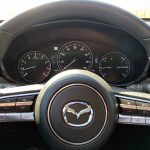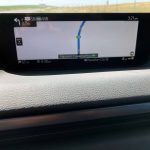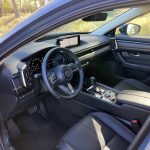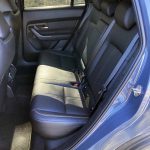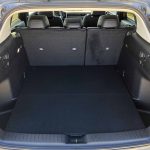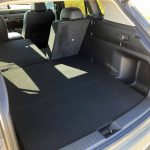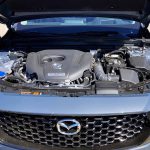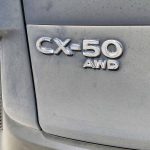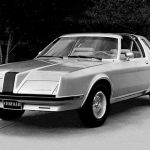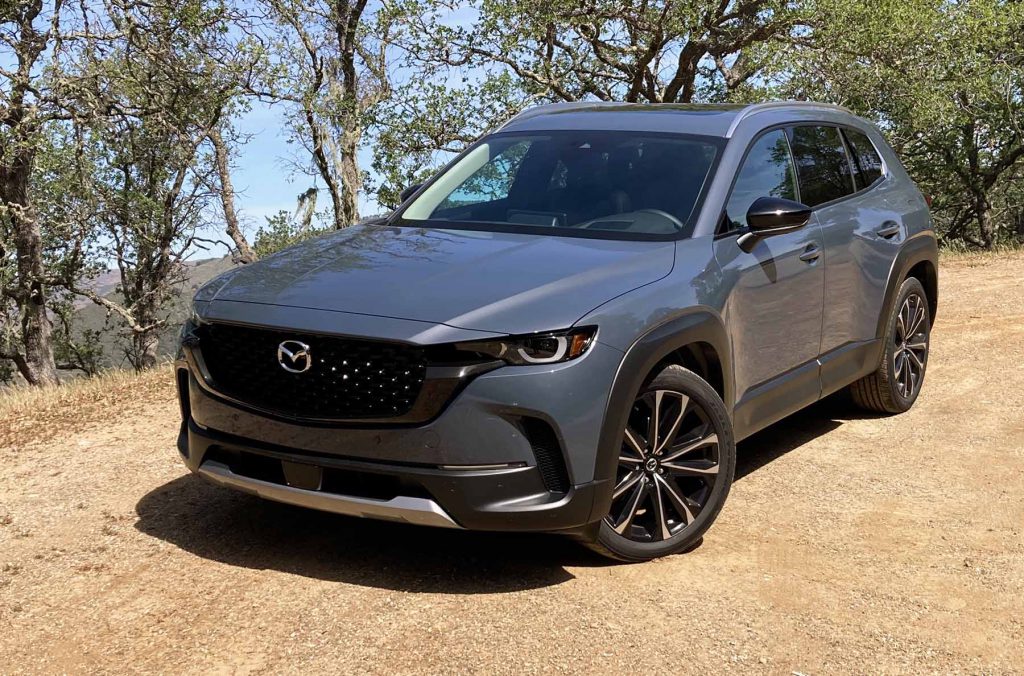
 Is one of the unexpected long-term side effects of COVID-19 the public’s increased interest in outdoor activities like camping, hiking, and kayaking? The timing could be a coincidence, but it’s clear that car companies are introducing an ever-increasing array of off-road-focused SUVs—or at least off-road-flavored SUVs—to meet the market’s embrace of these more adventurous lifestyles. Even well-established outdoorsy brands like Subaru are getting more outdoorsy.
Is one of the unexpected long-term side effects of COVID-19 the public’s increased interest in outdoor activities like camping, hiking, and kayaking? The timing could be a coincidence, but it’s clear that car companies are introducing an ever-increasing array of off-road-focused SUVs—or at least off-road-flavored SUVs—to meet the market’s embrace of these more adventurous lifestyles. Even well-established outdoorsy brands like Subaru are getting more outdoorsy.
Mazda’s new-for-2023 CX-50 represents a noteworthy expansion in focus for the brand. Traditionally, Mazda vehicles have been primarily tuned for on-road driving dynamics, but the CX-50 is more overtly aimed at off-road driving and active-lifestyle adventures than any Mazda in recent memory. Mazda says it’s “purpose-built for outdoor enthusiasts.” Significantly, the CX-50 aims to deliver enhanced all-terrain capabilities without compromising the engaging on-road driving character that is Mazda’s stock-in-trade. Considering that even the most active outdoor adventurers will spend the majority of their seat time on paved roads, this is a logical path for the CX-50 to follow.
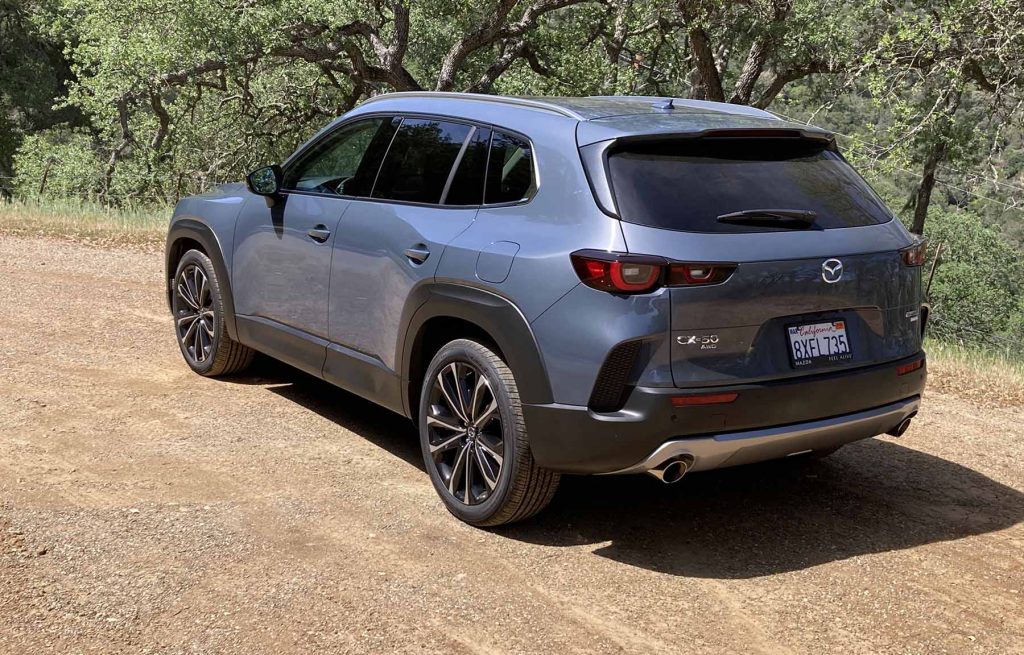
Mazda’s original reveal photos showcased a CX-50 with a slightly raised ride height, all-terrain tires, an accessory roof rack, and a matte-black hood graphic with cutout “CX-50” lettering, but these features are not available on any CX-50 model at launch. They’ll arrive later in the 2023 model year on a CX-50 Meridian Edition model, which Mazda says is “equipped for outdoor adventure and individual expression.” Other Meridian-exclusive features include 18-inch all-terrain tires on black-finished alloy wheels, side rocker garnishes, a pair of roof crossbars, and a roof-mounted cargo platform.
We categorize the CX-50 as a compact SUV, though it’s on the larger end of the class. In terms of the CX-50’s exterior dimensions, Mazda has embraced the time-tested Detroit ideal of “longer, lower, and wider.” Compared to Mazda’s current-generation CX-5 compact SUV (which the CX-50 complements, rather than replaces, in Mazda’s lineup) wheelbase increases by 4.6 inches and overall length is up 6.7 inches. Width increases by 3.1 inches and height is down nearly as much. These changes may sound subtle, but taken together, the change in overall proportions is dramatic when compared to other Mazda SUVs that use the same basic styling themes.
Test Drive Gallery: 2021 Mazda CX-9 Signature
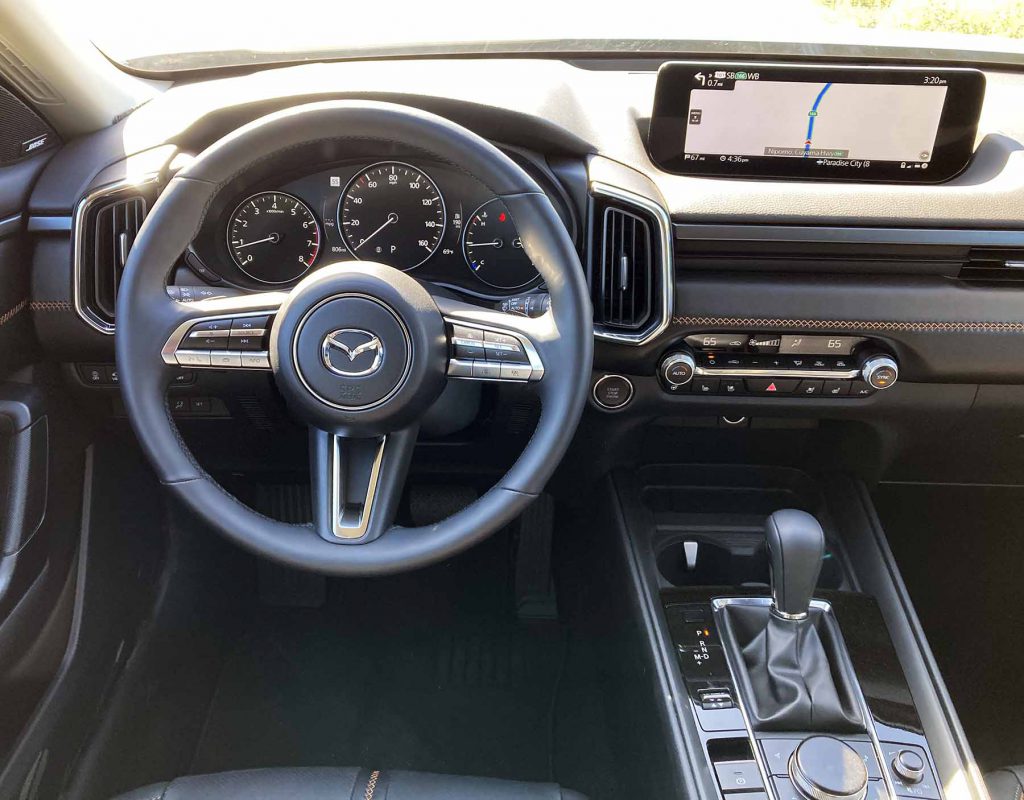
The CX-50’s exterior styling blends Mazda’s signature design cues with blackout trim and wheel-arch/lower-body cladding for a more “rugged-outdoors” vibe. The profile view is quite distinctive, with an unexpected lowness to the hood and a relatively low roofline. The strong fender flares are gracefully integrated into the otherwise simple bodysides, and the visual weight of the cladding helps make the rest of the bodywork appear svelte. The result looks fantastic to our eyes, a visually captivating blend of elegance, strength, and sportiness. Mazda’s pivot toward car-based station-wagon proportions sets the CX-50 apart from the typical “trucky” SUV… we wonder if the CX-50 was initially envisioned during its development to have more of a performance persona before market conditions prompted the model’s focus to shift off-road.
During a presentation at the CX-50’s press-preview event, CX-50 chief engineer Naoki Okano used the term “station wagon” while describing the cargo area. Most car companies avoid the term, since traditional station wagons are considered passé (and don’t sell very well) these days, but it’s apropos here. Unlike many SUVs, where the cargo area has a relatively small floor combined with greater vertical space, Okano described how the CX-50 was designed with a longer load floor while sacrificing some height because of the lower roofline. Mazda asserts this station-wagon-like configuration is easier to load and maximizes usability and cargo accessibility. These design choices also make it easier to load things onto the vehicle’s roof, which today’s outdoor enthusiasts are more likely to do. It’s an interesting approach that not many competitors follow, and these interior choices almost certainly influenced the CX-50’s exterior proportions.
First Spin: 2021 Mazda CX-30 2.5 Turbo
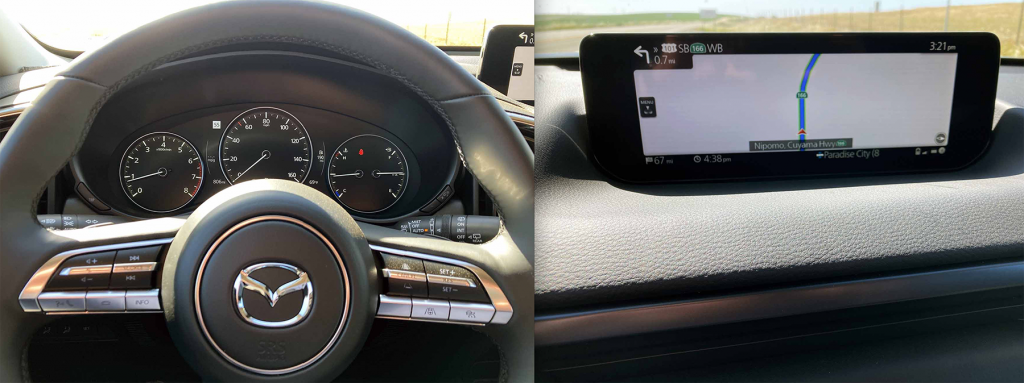
There’s nothing especially new under the CX-50’s hood… at least not yet. It debuts with Mazda’s familiar 2.5-liter 4-cylinder engine in either naturally aspirated or turbocharged form. The only transmission choice is a 6-speed automatic, and it pairs with standard “i-ACTIV” all-wheel drive. The naturally aspirated engine is rated at 187 horsepower, while the turbo receives a 227-hp rating (which increases to 256 hp on 93-octane premium-grade gasoline). The base engine has EPA-certified fuel-economy ratings of 24 mpg city/30 highway/27 combined; the turbos are a bit less efficient at 23/29/25. Mazda says electrified versions of the CX-50, including a traditional hybrid model, will be added in the future.
The CX-50’s all-wheel drive system includes the Mazda Intelligent Drive Select (or Mi-Drive) driver-selectable drive-mode system, and it adds an off-road mode and, on 2.5 Turbo models, a towing mode. The off-road mode is tuned to help stability on gravel roads and increase traction in low-speed situations, but doesn’t include any type of hill-descent control. The tow mode is designed to help shift weight onto the front tires, which helps maintain the vehicle’s normal steering response. It also adjusts the torque split to the rear axle to better control yaw motions from the trailer. CX-50s with the base engine are rated to tow up to 2000 pounds, while the turbos can pull up to 3500 pounds.
Consumer Guide Car Stuff Podcast, Episode 81: Mazda 3 and CX-30 2.5 Turbo, Traffic Pet Peeves
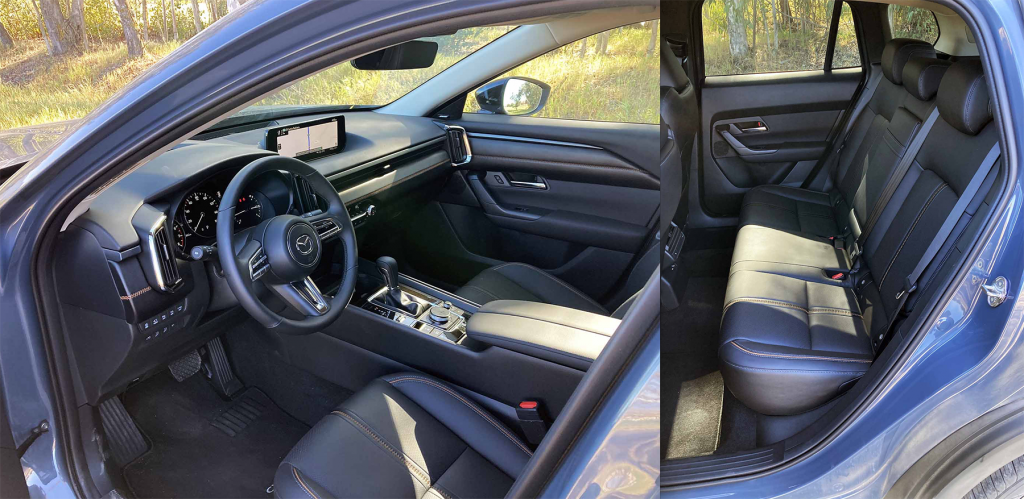
At launch, CX-50 will be offered in nine configurations. Base models with the naturally aspirated engine come in 2.5 S ($26,800), 2.5 S Select, ($28,200), 2.5 S Preferred ($29,500), 2.5 S Preferred Plus ($31,940), 2.5 S Premium ($34,400), and 2.5 S Premium Plus ($36,400) trim levels. Turbocharged models come in 2.5 Turbo ($36,400), 2.5 Turbo Premium ($39,550), and 2.5 Turbo Premium Plus ($41,550) form. The turbocharged Meridian Edition arrives later, but Mazda is tight-lipped about how it will be positioned and priced compared to other CX-50s. Destination adds $1225 ($1270 in Alaska) to any CX-50. For comparison, Mazda’s 2022 CX-5 covers a price spread of $25,900 to $38,650. At the CX-50’s press-preview event in Santa Barbara, California, we drove a top-of-the-line Turbo Premium Plus model that wore extra-cost Polymetal Gray Metallic paint ($395) that nudged the bottom-line price to $43,170 including destination.
The CX-50’s doors open wide, and the step-in feels a bit easier and lower than is typical for a compact SUV. The front seat is roomy and comfortable, and this 6-foot 2-inch tester found it easy to dial in a comfortable seating position. There is plenty of headroom under the panoramic sunroof’s housing. (The CX-50’s available panoramic sunroof is Mazda’s first—it comes standard on 2.5 S Preferred models and above.) The rear doors open wide, and entry and exit are very easy. Behind a front seat set for myself, I had just enough headroom and legroom to be comfortable.
Quick Spin: Mazda CX-5 Signature
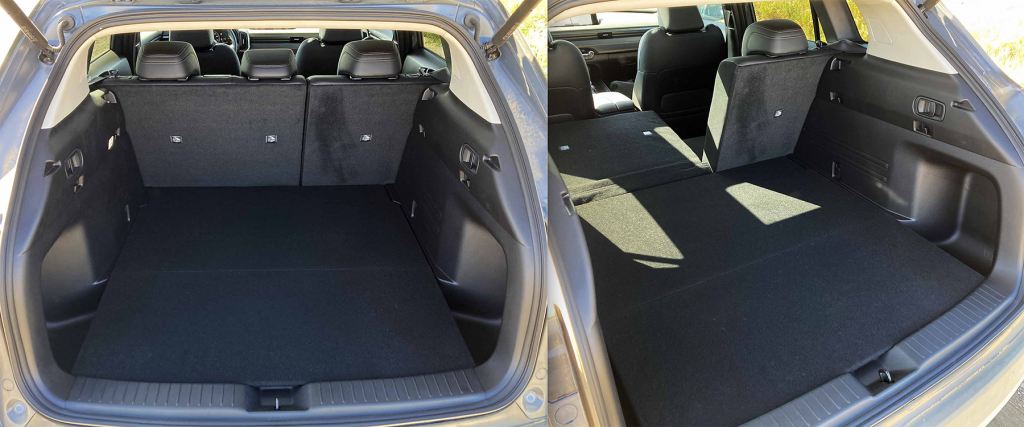
Our test vehicle had a black leather interior which looked convincingly upscale and was very tastefully trimmed. Soft-touch and padded surfaces are plentiful, with hard plastics largely found in lower sections of the interior in less-noticed places like the sides of the center console. Visual highlights include complex color-contrast detail stitching and just enough chrome accents to add some pizzazz. Unfortunately, the chrome trim extends to some small control buttons on the steering-wheel spokes that proved nearly impossible to decipher in the California sun.
The low hood and cowl help create an expansive view forward, and we appreciated that our test vehicle’s head-up windshield display remained easy to read when we were wearing polarized sunglasses. We also liked the clever location of the wireless charging pad—it’s aft of the shifter and hidden under the overhang of the central armrest. The location is protected, yet easy to access. Your phone sits in a textured depression that was perfectly sized for our iPhone SE and a colleague’s iPhone 11 Pro, but it might prove to be a tight fit for larger phones.
The gauge cluster mixes digital and analog displays; it looks great and is easy to read. The large central display screen is mounted in a depression atop the dash. It’s 10.25 inches wide and boasts sharp graphics, but the screen is relatively compact top-to-bottom (the proportions remind us of the side view of a loaf of bread). Most infotainment functions are accessed via the console-mounted “Commander Control” knob and its surrounding shortcut buttons. It’s possible to activate touchscreen capability in a vehicle settings menu, but it only works with Apple CarPlay and Android Auto. Unfortunately, the display’s location leaves it somewhat too far forward and out of reach for easy use as a touchscreen.
Quick Spin: 2022 Jeep Compass Limited
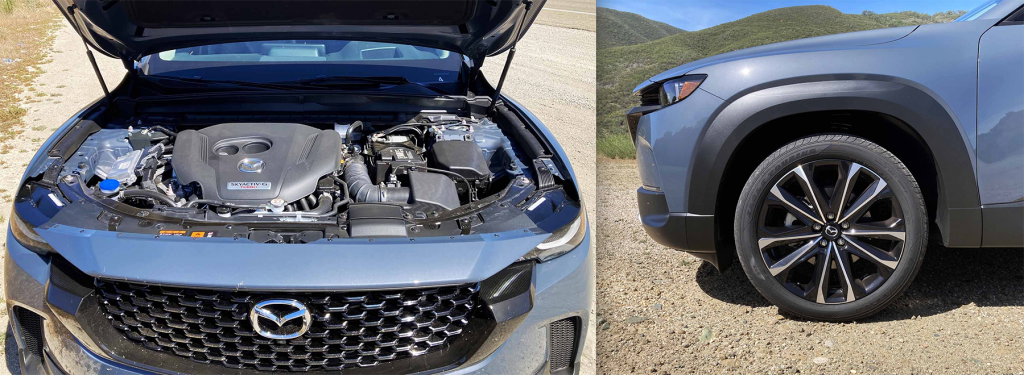
On the road, the turbocharged engine is refined and offers ample power (Mazda told us our test vehicle was filled with 91-octane premium, so it wasn’t making the full 256 horsepower available with 93-octane juice). Throttle response is excellent, and there’s no obvious turbo lag. The 6-speed automatic has been around a while (most rivals use continuously variable transmissions or an 8- or 9-speed automatic), but it’s very smooth and always seems to be in the right gear.
Handling is confident and stable, even sporty, in the curves. Most CX-50s ride on all-season street tires, with only the upcoming Meridian rolling on off-road all-terrain rubber. All turbo CX-50s and the non-turbo Premium Plus model wear 20-inch alloy wheels; the rest get 17-inch alloys. Our test vehicle was equipped with 245/45R20 Goodyear Eagle Touring tires that rode comfortably on the California roads of our drive route, which contained a surprisingly diverse array of pavement types. On smooth surfaces, the CX-50 is impressively quiet even at highway speeds, with the Goodyears running almost silently. But the situation changed dramatically on coarse pavement, where the tires kicked up a surprising amount of road noise that was loud enough to be intrusive and prompt us to turn up the radio. We also heard a persistent vibration or rattle from somewhere on the passenger’s side of the interior while on especially coarse pavement. At our next stop, we checked the CX-50’s storage spots for the culprit but couldn’t find any obvious cause for this audible irritation. We don’t know for sure that we “fixed” it, but the vibration never reappeared after we relocated the thick owner’s manual to the upper “shelf” section of the glovebox.
Test Drive Gallery: 2022 Hyundai Tucson Limited
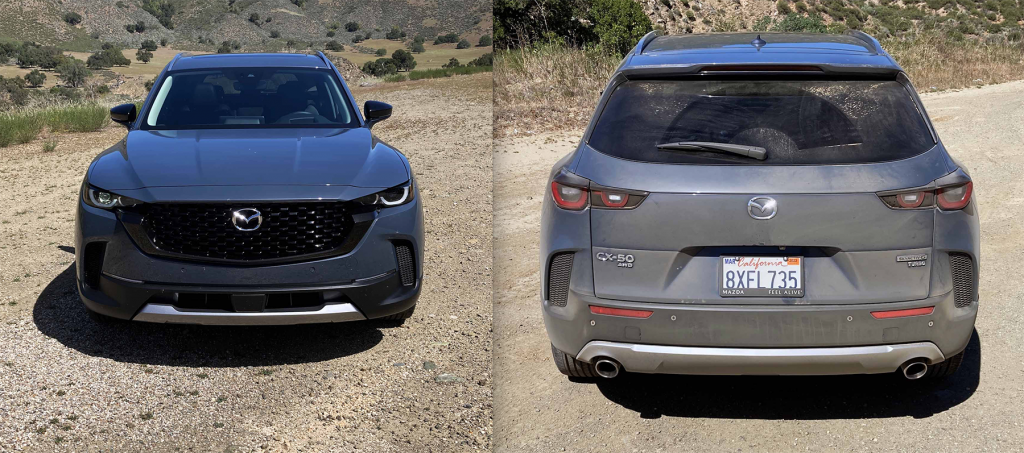
Mazda also gave us the opportunity to drive our test vehicle on an off-road trail that was prepared for the event. The all-season rubber confidently handled the dusty dirt-and-gravel trails and soft rolling hills of the trail. The most challenging sections were steep dirt hills where the CX-50 set in Off-Road Mode had ample traction to easily make it up and down. As mentioned earlier, Mazda says they wanted to add as much off-road capability as they could without introducing obvious compromises in on-road composure. After our day behind the wheel, we think they did a good job balancing the two.
Test Drive Gallery: 2022 Subaru Ascent Onyx Edition
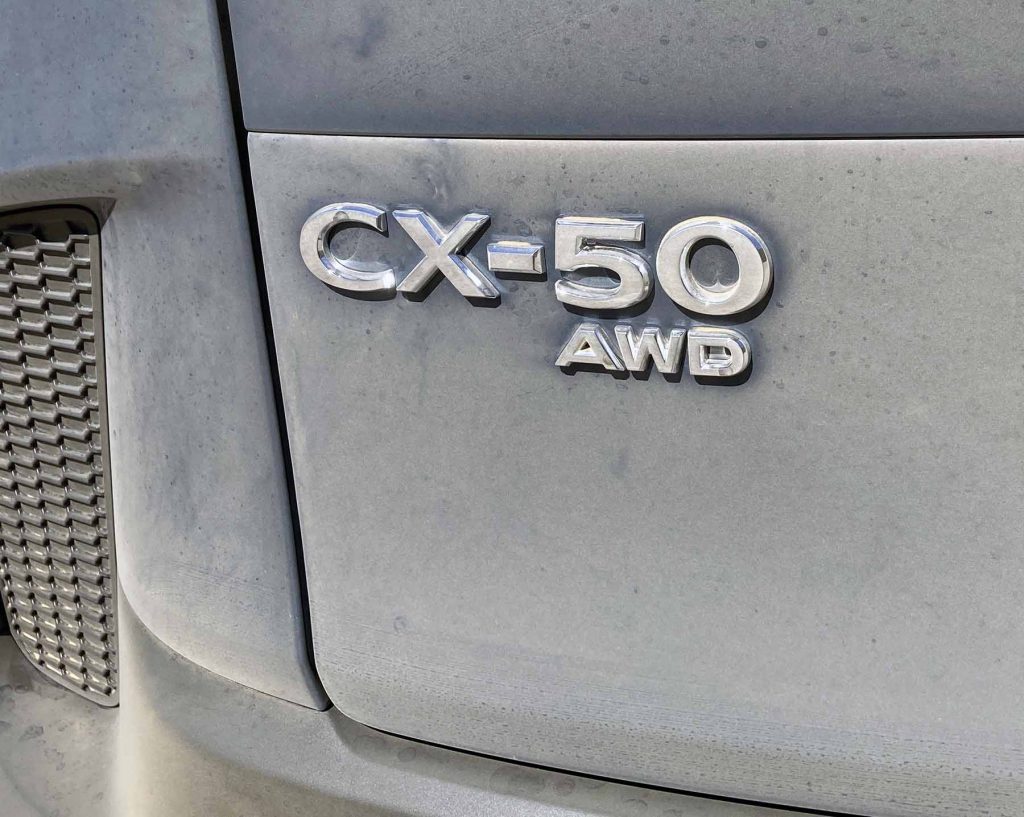
The rear cargo area floor is flush with the bottom of the liftgate opening, and it is indeed longer front-to-rear than is typical for a compact SUV. A shallow bin—maybe just big enough to squeeze in a gallon of milk—is tucked in behind the rear wheelhouse on each side. Cargo room with the rear seats up is 31.4 cubic feet, expanding to 56.3 cubic feet with the split-folding rear seatbacks folded. Those seatbacks easily flip forward and fold flush with the cargo floor to create a smooth, level surface. By comparison, the smaller CX-5 offers 30.9 cubic feet behind the rear seats, but with the rear seats down it is roomier than the CX-50 at 59.6 cubic feet.
Our first impression is that the CX-50 kind of goes off in its own direction and doesn’t have any obvious close competitors. We’re intrigued by the station-wagon proportions, so from that perspective (and Mazda’s focus on outdoor adventuring) the CX-50’s closest rival might be the somewhat larger Subaru Outback—an SUV-flavored station wagon that we categorize as a midsize car. Other compact crossover SUVs with an off-road-focused attitude are the Ford Bronco Sport, Jeep Compass, Subaru Crosstrek and Forester, and the Adventure and TRD Off Road versions of the Toyota RAV4. None of those have quite the same upscale feel—or the same athletic driving character—as the CX-50, however.
The CX-50 should begin appearing at Mazda dealers by this April. It is the first Mazda vehicle to be built at the joint-venture Mazda Toyota Manufacturing (MTM) plant in Huntsville, Alabama. We should mention that while Toyota builds the Corolla Cross SUV in its half of this factory, the Corolla Cross and CX-50 are completely unrelated.
At first, it might seem peculiar that Mazda has introduced a new SUV that’s so close in size and price to its existing CX-5, but the CX-50 justifies its existence quite well. Mazda makes the most of the classic design idea of longer, lower, and wider to create a very attractive and thoroughly modern-looking SUV. We are also impressed with the turbocharged drivetrain’s power and refinement, and the CX-50’s on-road dynamics. Minor disappointments include the uneven suppression of road noise and the time required to master the Commander Control infotainment interface.
We don’t think the picture of the CX-50 as an active-lifestyle accessory extension of the Mazda brand has developed fully yet, but our test vehicle proved capable of handling moderate off-road challenges on its all-season tires. Pricing at the top end clearly falls in line with Mazda’s aspirations as a premium brand, but overall the CX-50 is a very desirable addition to the compact SUV class—whether you’re driving on-road or off-road.
Quick Spin: 2022 Volkswagen Tiguan SEL R-Line
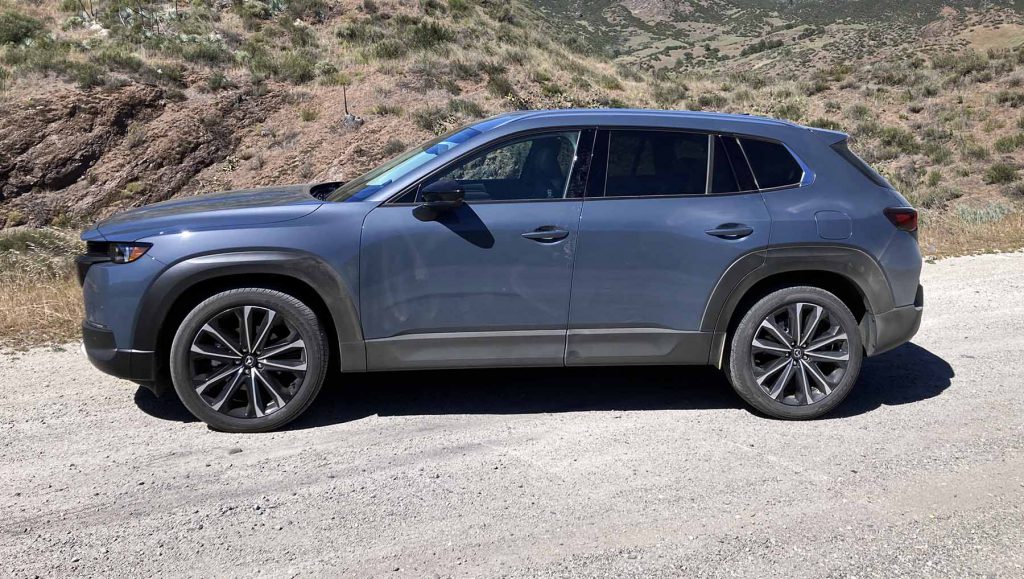
Listen to the Car Stuff Podcast
2023 Mazda CX-50 Gallery
(Click below for enlarged images)

